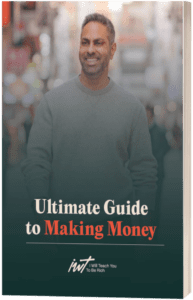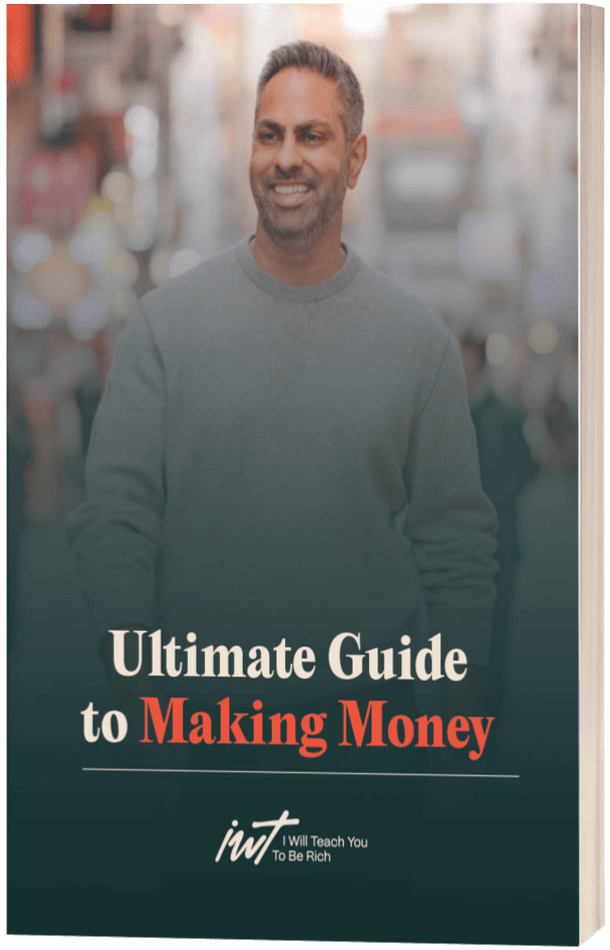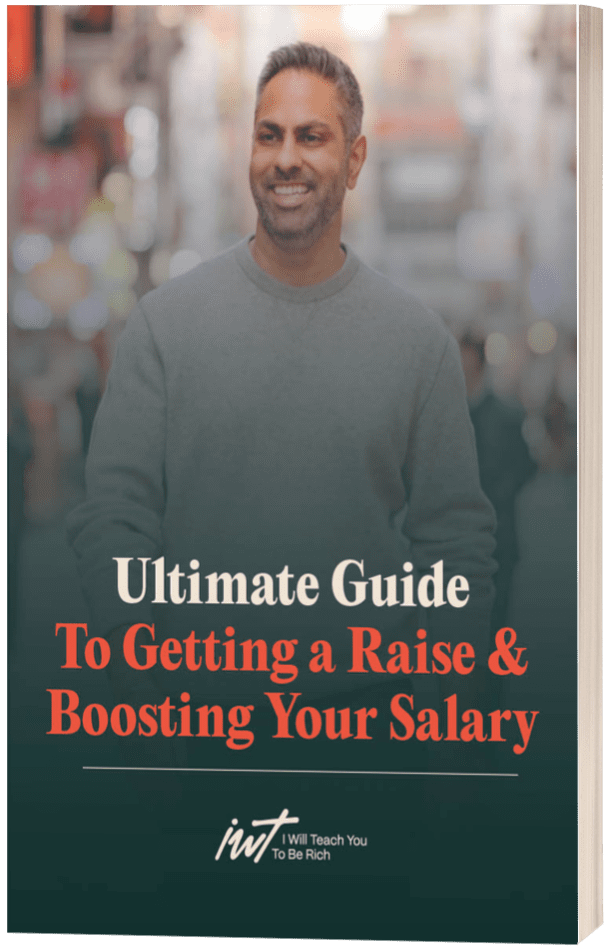
How to Manage Your Money (10 simple steps to gain control of your finances)
Managing your money doesn’t have to be rocket science, but it is a prerequisite for building your rich life. In this post, I’ll walk you through how to manage your money in 10 simple steps.
Don’t worry about being perfect right now, even if you just start with Step 1 today, you’ll be in a better financial state than having not started at all.
Table of Contents
Step 1: Start by understanding your current financial situation
Before you can effectively manage your money, you need to know exactly where you stand. This means taking a comprehensive look at your income, expenses, debts, and assets. It’s like taking a financial snapshot of your life right now.
Begin by gathering all your financial documents: bank statements, credit card bills, loan information, and investment accounts. Now, let’s break this down into actionable steps:
- Calculate your total monthly income: This includes your salary and any side hustles or freelance work.
- List out ALL your monthly expenses: Be thorough. Include everything from rent and utilities to your daily coffee run. Don’t forget about one-time (but important) expenses like annual subscriptions or quarterly insurance payments.
- Tally up your debts: Make a list of all your debts, including credit cards, student loans, car loans, and mortgages. Note the balance, interest rate, and minimum payment for each.
- Take a look at your assets: This includes savings accounts, retirement funds, property, and valuable possessions.
- Determine your net worth: Subtract your total debts from your total assets. This gives you a clear picture of your overall financial health.
Once you all this information, determine your net worth with this formula:
Net worth = Total Assets – Total Debts
Next, identify patterns in patterns in your spending and identify areas for improvement, for example:
- Are you spending more than you earn?
- Are high-interest debts eating away at your income?
- Do you have an emergency fund tucked away for a rainy day?
Knowing the above empowers you to make informed decisions and set realistic financial goals.
Remember, this is your starting point. Don’t judge yourself harshly if the numbers aren’t what you hoped for. The fact that you’re taking this step puts you ahead of many people. You’re laying the foundation for a better financial future, and that’s something to be proud of.
Step 2: Reconsider your beliefs about money
We may not realize it, but our lives are often controlled by invisible scripts – narratives we tell ourselves that influence the way we approach life’s opportunities and challenges.
For example, an “invisible script” that has long dominated society (but is now being questioned) is that you have to get a college degree to be successful.
Most people also have invisible scripts about money ingrained in them, like “investing is only for the top 1%”. Such false narratives limit what you can achieve with your money and prevent you from living a Rich Life.
Other invisible scripts about money that might be holding you back are:
- “I’m not good with money”: This self-limiting belief can prevent you from taking control of your finances. Everyone can learn to manage money effectively. It’s a skill, not an innate talent.
- “Budgeting means depriving myself”: Think of budgeting as a spending plan that aligns with your values and goals, not a restrictive diet for your wallet.
- “I need to make more money to save”: While earning more helps, saving is about habits, not just income. Start with what you have, even if it’s small.
Challenge yourself to identify your own money beliefs. Where did they come from? Are they serving you well? If not, how can you reframe them?
Instead of tying myself to rigid money beliefs, I set up Money Rules for my life which keep me grounded with how I manage my money while living my Rich Life. My 10 Money Rules are flexible and have helped me build life changing wealth, check it out:

It’s one of the best things I’ve published (and 100% free), just tell me where to send it:

Step 3: Instead of budgeting, start “Conscious Spending”.
Traditional budgeting often feels restrictive and rigid. That’s why I advocate for a more flexible approach: conscious spending. Here’s how you can start:
- Identify your values: What truly matters to you? Is it travel, education, family, or personal growth? Understanding your priorities is crucial for making intentional spending decisions.
- Categorize your expenses:
- Fixed costs: Essentials like rent, utilities, and insurance.
- Savings: Including retirement and emergency funds.
- Investments: For long-term wealth building.
- Guilt-free spending: Money you can spend on anything you want.
- Allocate percentages: Instead of rigid dollar amounts, assign percentages of your income to each category. A common breakdown might be:
- 50-60% for fixed costs
- 10-20% for savings
- 5-10% for investments
- 20-35% for guilt-free spending
- Automate the essentials: Set up automatic transfers for your fixed costs, savings, and investments. This ensures you’re meeting your financial obligations and goals before spending on wants.
- Spend freely on what you love: With your essentials covered, you can spend your guilt-free money without worry. Want that fancy coffee or weekend getaway? Go for it!
- Cut mercilessly on things you don’t care about: Identify areas where you’re spending money that don’t align with your values. Redirect this money to areas that matter more to you.
- Regularly reassess: As your life changes, so will your priorities. Review your conscious spending plan periodically to ensure it still aligns with your goals.
The beauty of conscious spending is that it focuses on optimization rather than deprivation. You’re not saying “no” to everything; you’re saying “yes” to what truly matters to you.
This is just an overview of conscious spending, and if you’d like to dive deeper into this – I wrote a full guide on how to build a Conscious Spending Plan here
Step 4: Automate your finances where you can
Smart money management doesn’t mean you should be checking your accounts all the time. You should be automating your finances so they work on autopilot.
Automating your finances ensures you’re consistently making progress towards your financial goals, even when life gets busy or if your motivation drops.
Here’s how to set up an automated financial system:
- Direct deposit: If you haven’t already, set up a direct deposit for your paycheck. This ensures your money hits your account quickly and regularly.
- Automatic savings transfers: Schedule transfers to your savings account(s) right after payday. This way, you’re paying yourself first before you have a chance to spend the money elsewhere.
- Retirement contributions: Set up automatic contributions to your 401(k) or IRA. If your employer offers a match, make sure you’re contributing enough to take full advantage of it.
- Bill payments: Use your bank’s online bill pay system or set up automatic payments for recurring bills like rent, utilities, and subscriptions. This helps avoid late payment fees.
- Debt repayments: Schedule automatic payments for loans and credit cards. Always pay at least the minimum, but consider setting up higher payments if you’re focusing on debt reduction.
- Investment contributions: If you’re investing outside of retirement accounts, set up automatic transfers to your investment account.
- Credit card payments: Set up automatic payments for the full balance of your credit card each month to avoid interest charges.
- Rebalancing investments: Many investment platforms offer automatic rebalancing to keep your portfolio aligned with your target asset allocation.
All of this may sound like a lot, and I hear you. I suggest you take the weekend to do the heavy lifting of setting up all your automations at once and you can pretty much rest easy after that.
If you’d like somewhere easy to start, check out my video on setting up a Paycheck Routine:

It’s one of the best things I’ve published (and 100% free), just tell me where to send it:

Step 5: Cut out on things you don’t need
“Conscious Spending” isn’t about encouraging overspending. Rather, it’s about focusing your spending on those things that truly matter in your life, and aggressively cutting on the things that don’t.
To start, I suggest that you conduct a spending audit and identify low-value spending. Which expenses don’t align with your values or bring you joy? These are prime candidates for elimination.
For example, let’s say you have subscriptions to Netflix, Hulu, and Amazon Prime. Do you actually use all three? Or maybe you tend to spend a lot on groceries? But you then aren’t motivated to cook and end up letting your produce spoil. What about getting easy-to-make meal prep kits delivered instead?
An unconventional method is to reduce necessary costs like your cell phone bill. Do you really need all that data if you’re always on Wi-Fi? This applies for every other expense that you might be paying – from cable bills to credit card interest rates, it never hurts to ask for a better deal.
As you free up money by cutting unnecessary expenses, you have more to allocate towards your priorities – whether that’s paying off debt, saving for a big goal, or investing for the future.
In the next section, we’ll explore ways to increase your income, giving you even more resources to work with in your financial plan.
Step 6: Figure out ways to earn more
While cutting expenses is crucial, increasing your income can dramatically accelerate your progress towards financial goals. Here are several strategies to boost your earnings:
- Negotiate a raise: If you’re excelling in your current job, make a case for a salary increase. Prepare by documenting your achievements and researching market rates for your position.
- Switch jobs: Sometimes, the best way to increase your income is to find a new employer. Keep your skills sharp and your network active.
- Pursue a side hustle: Leverage your skills or interests to create additional income streams. This could be freelancing, consulting, or starting a small business.
Depending on your situation, I got you covered, check out:
- Ultimate Guide to Getting a Raise & Boosting Your Salary
- How to Make a Career Change
- 20+ Ways to Make Money on The Side
Remember, the goal isn’t necessarily to work around the clock. Instead, focus on high-value activities that provide the best return on your time and effort. Also, consider the tax implications of additional income and set aside money for taxes if needed.

And join over 800,000 readers getting our Insiders newsletter, where we share exclusive content that’s not on the blog:
Step 7: Invest your money (if you aren’t already)
Investing is one of the most powerful ways to build long-term wealth and achieve financial freedom. While you might not see great gains in the short term, this is a great way to prepare for retirement, and to keep up with external factors like inflation: Here’s a breakdown on how to start investing:
- Start early: Time is your greatest ally in investing. Thanks to compound interest, even small amounts invested now can grow significantly over time.
- Understand your risk tolerance: Your investment strategy should align with your financial goals and comfort level with risk. Generally, younger investors can afford to take on more risk for potentially higher returns.
- Diversify your portfolio: Don’t put all your eggs in one basket. Spread your investments across different asset classes (stocks, bonds, real estate) and sectors to manage risk.
- Consider low-cost index funds: These funds provide broad market exposure and typically have lower fees than actively managed funds. They’re an excellent option for many investors, especially beginners.
- Take advantage of tax-advantaged accounts: Maximize contributions to accounts like 401(k)s and IRAs. These can provide significant tax benefits and often come with employer matches.
- Automate your investments: Set up regular, automatic transfers to your investment accounts. This strategy, known as dollar-cost averaging, can help smooth out market volatility over time.
Remember, investing involves risk, and it’s normal for markets to go up and down. For most people, including myself, a simple, consistent approach using low-cost, diversified investments is an excellent path to building wealth.
Step 8: Read more about personal finance
If you’re new to personal finance, one of the most important steps you’ll take is educating yourself about the topic. Personal finance evolves very quickly, so staying informed can help you adapt your strategies and take advantage of new opportunities quickly.
If you’re just starting out:
- Start with the basics: If you’re new to personal finance, begin with foundational books that cover budgeting, saving, and investing principles. Look for titles by respected authors in the field.
- Diversify your sources: Don’t rely on just one perspective. Read a mix of books, blogs, podcasts, and reputable financial websites to get a well-rounded view.
- Follow financial experts: Subscribe to newsletters or social media accounts of trusted financial advisors and educators. They often share valuable insights and timely advice.
The best way to learn about personal finance is to read books. In fact, I read 50 books about money, and here are the five I recommend so you can save time getting up to speed with the best personal finance knowledge out there:


It’s one of the best things I’ve published (and 100% free), just tell me where to send it:


Step 9: Revisit your financial situation regularly
Your financial journey isn’t a one-time event; it’s an ongoing process that requires regular attention and adjustment. Life changes, economic conditions shift, and your goals may evolve over time.
It’s crucial to periodically review and update your financial plan. Here’s how to make this a productive and effective practice:
- Schedule regular check-ins: Set aside time quarterly or at least semi-annually to review your finances. Mark these dates in your calendar to ensure you don’t forget. Remember to evaluate your spending patterns!
- Review your goals: Are your financial goals still relevant? Have you achieved any? Do you need to set new ones? Ensure your financial plan aligns with your current aspirations.
- Assess your net worth: Calculate your assets minus liabilities. This gives you a clear picture of your overall financial health and how it’s changing over time.
Based on your review, make the necessary adjustment to your Conscious Spending Plan. Remember, these reviews aren’t about beating yourself up over missteps. They’re opportunities to learn, adjust, and improve.
Step 10: Start NOW
The most critical step in managing your money is simply to begin. The power of getting started cannot be overstated, and here’s why:
- Time is your greatest asset: The earlier you start, the more time your money has to grow. Thanks to compound interest, even small amounts invested now can grow significantly over time.
- Habits take time to form: Good financial habits don’t develop overnight. The sooner you start practicing, the quicker these habits will become second nature.
- Building financial resilience: The sooner you start saving and investing, the better prepared you’ll be for unexpected financial challenges.
- Flexibility for the future: Starting now gives you more options later in life, whether it’s early retirement, career changes, or pursuing passion projects.
If you need help starting now, here are a few resources you can consider:


It’s one of the best things I’ve published (and 100% free), just tell me where to send it:


Written by Ramit Sethi
Host of Netflix's "How to Get Rich", NYT Bestselling Author & host of the hit I Will Teach You To Be Rich Podcast. For over 20 years, Ramit has been sharing proven strategies to help people like you take control of their money and live a Rich Life.


